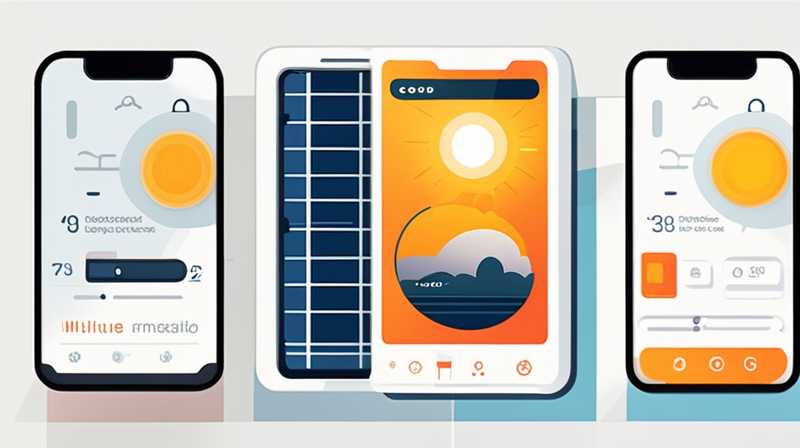
1. Definition and Origin of Solar Depression: Solar depression denotes the angle of the sun below the horizon, which impacts light levels and atmospheric conditions. The term originates from celestial navigation and astronomy, where it helps define the positioning of celestial bodies in relation to specific locations on Earth.
2. Importance in Astronomy: Understanding solar depression is vital for astronomers and meteorologists, as it aids in predicting solar angles throughout different times of the year. Depending on the season, the sun’s elevation varies significantly, affecting climate dynamics and energy absorption on Earth. This level of knowledge is instrumental for both practical and theoretical applications, ensuring proper planning and execution of scientific experiments that rely on precise solar measurements.
3. Influence on Climate and Weather Patterns: Solar depression plays a crucial role in climate patterns. As the angle of sunlight changes, it influences temperature distribution, evaporation rates, and precipitation patterns. For instance, during winter months, solar depression decreases the potential for photosynthesis in plants, which can impact food chains and ecosystems. Understanding these intricate details fosters better weather forecasting and climatology studies.
4. Impact on Daily Life: For individuals, solar depression directly influences daily activities and mood. The length of daylight affects sleeping patterns, productivity, and general well-being. Many people experience Seasonal Affective Disorder (SAD) due to reduced sunlight, as lower solar angles contribute to less bright days, particularly in higher latitudes.
5. Applications in Renewable Energy: The concept of solar depression is essential for the design and optimization of solar panels and other renewable energy technologies. Photovoltaic cells convert sunlight into energy, and understanding the sun’s angle enables engineers to position solar installations for maximum efficiency throughout the year. By optimizing the angle of solar panels, energy generation can be augmented significantly.
6. Role in Navigation and Timekeeping: Historically, solar depression has been utilized in navigation and timekeeping. Sailors relied on solar angles to determine their position at sea, ensuring safe passage and accuracy during voyages. In modern times, devices such as sundials exemplify the ancient use of solar depression in tracking time based on the sun’s position throughout the day.
7. Cultural and Societal Influences: Various cultures have revered the sun and its angles for centuries. Festivals often correspond with seasonal changes in solar depression, marking solstices and equinoxes with rituals and celebrations. The relationship between solar angles and cultural practices demonstrates the sun’s fundamental influence on human life and societal structures.
FREQUENTLY ASKED QUESTIONS
WHAT IS THE SIGNIFICANCE OF SOLAR DEPRESSION?
Solar depression is significant in multiple fields, especially in climate science and renewable energy. The angle at which sunlight hits the Earth varies throughout the year, affecting temperature and daylight duration. These changes are critical for understanding seasonal weather patterns and planning agricultural practices. Additionally, for renewable energy technologies, knowing solar angles helps optimize solar panel orientation, which is essential for maximizing energy capture. With advancements in solar technology, the ability to predict solar depression enhances energy efficiency and contributes to sustainable practices.
HOW DOES SOLAR DEPRESSION AFFECT AGRICULTURE?
The impact of solar depression on agriculture is profound, as it directly influences plant growth and crop yields. Reduced sunlight during certain seasons can lead to lower photosynthesis rates, affecting the overall health of crops. Farmers need to be aware of solar angles to optimize planting schedules and crop varieties for specific regions. Moreover, understanding seasonal changes can help manage irrigation practices and protective measures against frost in colder months. Consequently, a comprehensive grasp of solar depression informs agricultural decision-making and enhances food security.
WHAT ARE THE EFFECTS OF SOLAR DEPRESSION ON HUMAN MOOD?
Solar depression significantly impacts psychological well-being and everyday emotional states. Lower angles of sunlight, especially in winter, can result in feelings of lethargy and sadness in some individuals, contributing to Seasonal Affective Disorder (SAD). As daylight diminishes, serotonin levels drop, affecting mood regulation, which can lead to depression and anxiety. Recognizing the correlation between solar angles and mental health fosters better awareness and treatment options. To mitigate negative effects, individuals can adopt practices such as light therapy to supplement exposure to daylight during months of lower solar elevation.
In summary, solar depression encompasses various dimensions that affect not only navigational practices but also ecological and psychological aspects of daily life. Understanding this concept is fundamental for diverse applications ranging from agriculture to renewable energy and cultural observations. By acknowledging the nuanced influence of solar depression on multiple sectors, societies can adapt more effectively to changing environments and enhance their quality of life. Therefore, investing time in studying solar angles should be a priority, opening pathways for innovation and improved living standards. Additionally, as ongoing climate challenges emerge, understanding solar depression becomes even more critical in combating negative impacts on both the environment and human health, ensuring a resilient future.
Original article by NenPower, If reposted, please credit the source: https://nenpower.com/blog/what-does-solar-depression-mean/


